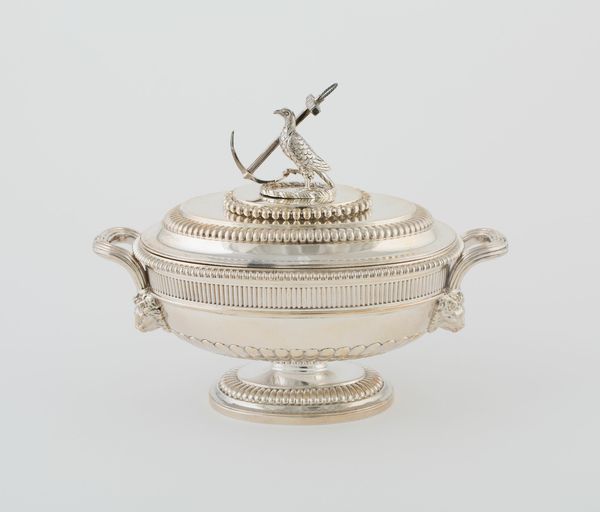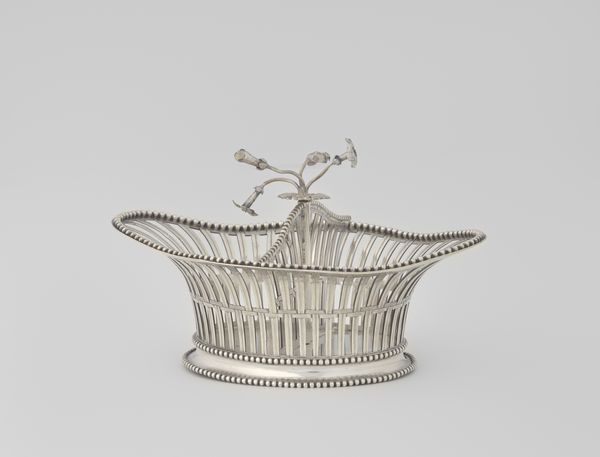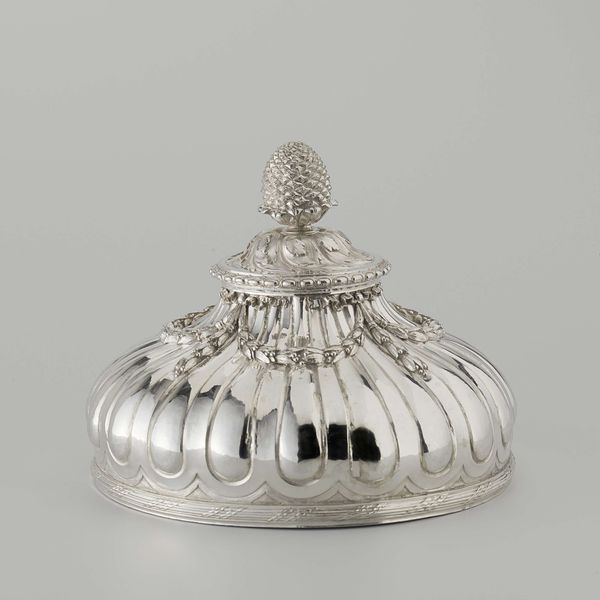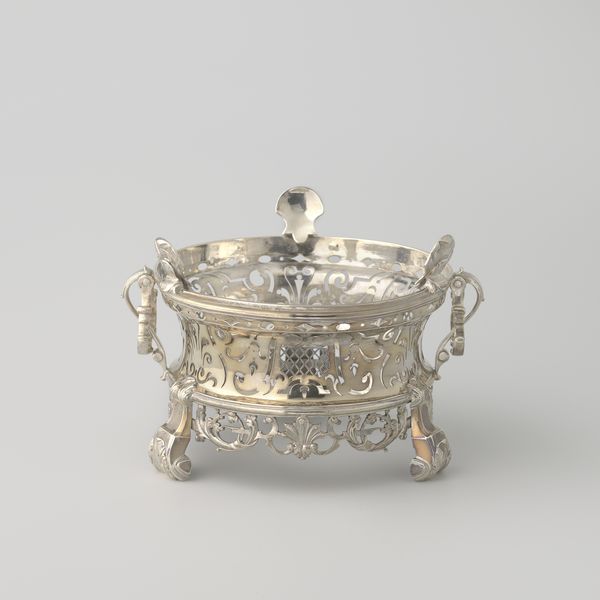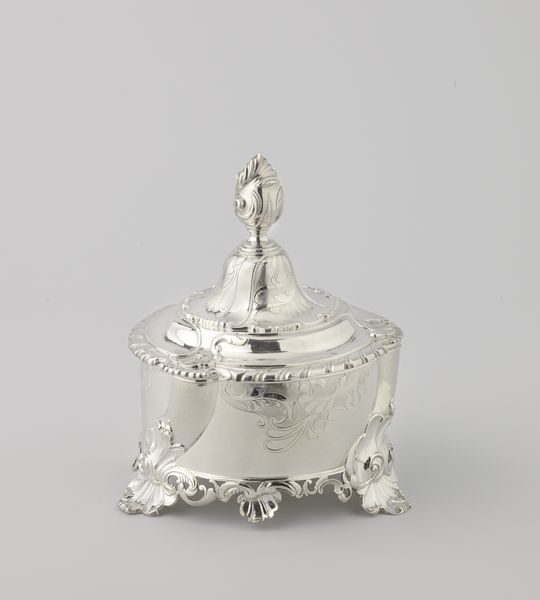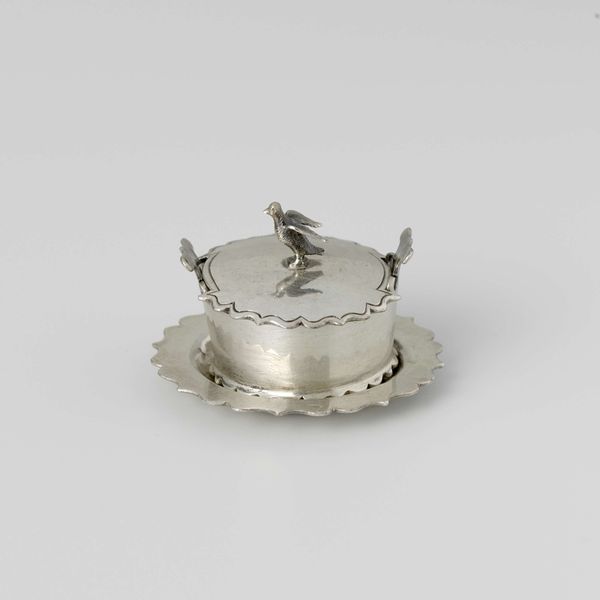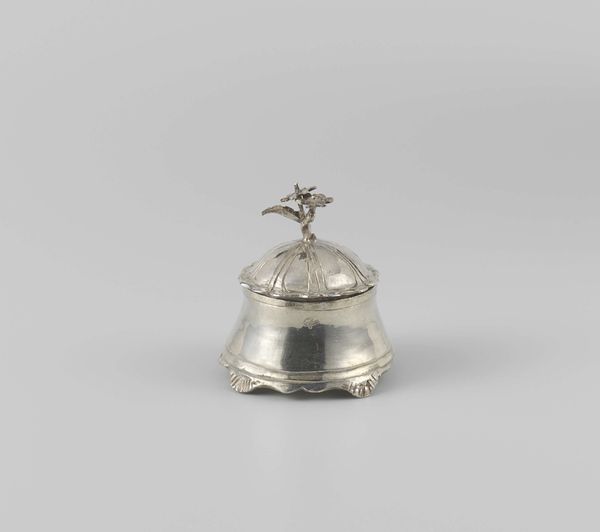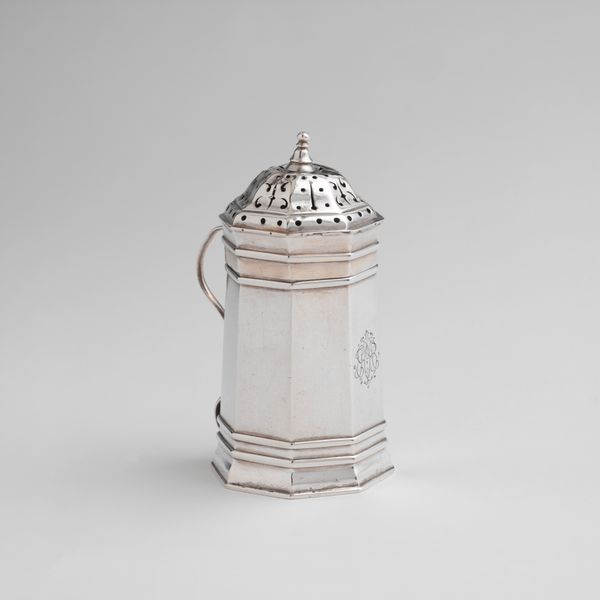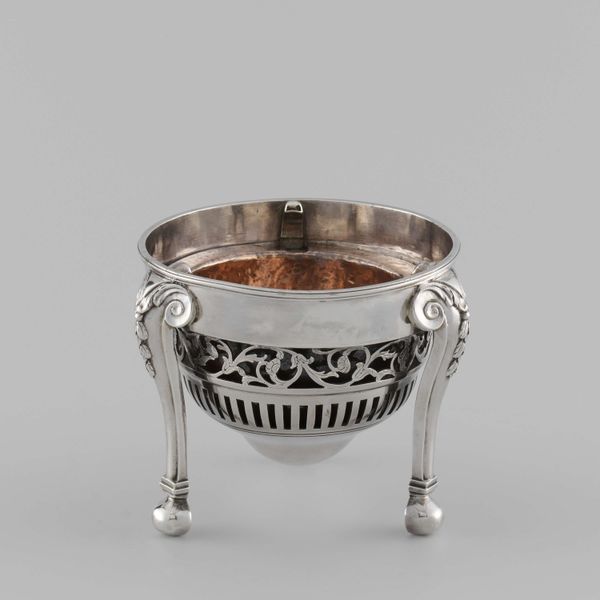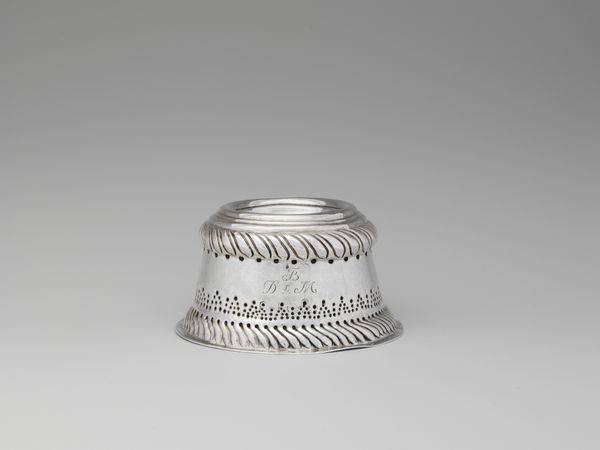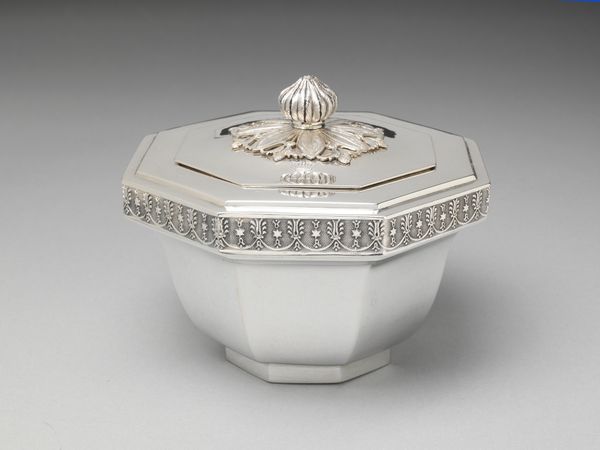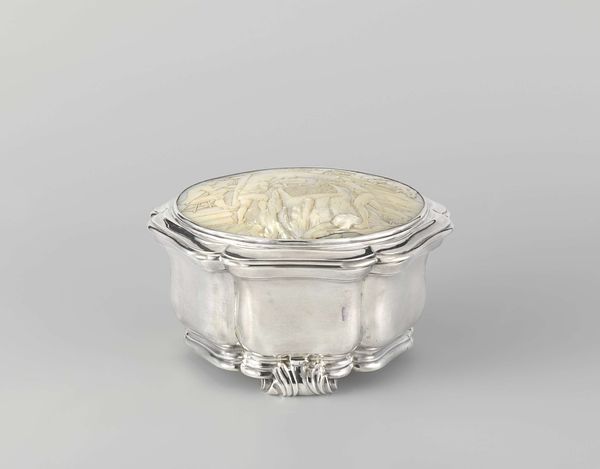
silver, metal, glass
#
silver
#
metal
#
glass
#
decorative-art
Dimensions: height 5.7 cm, width 8.1 cm, depth 4.9 cm
Copyright: Rijks Museum: Open Domain
Curator: Well, here we have what's described as a "Binnenbak van blauw glas," an intriguing piece of decorative art created in 1806. It appears to be the work of Diederik Willem Rethmeyer. Editor: It strikes me as utterly regal, despite its unassuming size. The shimmer of the silver juxtaposed with that jewel-toned blue glass--it’s like gazing into a long-lost treasure chest! Curator: Indeed, it’s crafted with both silver and glass. Given the period, pieces like this often held sociopolitical weight. Silver, naturally, was a symbol of status, displayed during feasts to impress guests and assert dominance. It could also serve as a dowry gift during weddings. Editor: You can almost imagine it gracing a grand table, can’t you? But the delicate filigree surrounding that inner blue--it gives the piece a rather dreamy, almost ethereal quality, as if holding something more than just condiments. I imagine the maker must've found joy in their work! Curator: Absolutely. Artisans were keen to infuse a narrative through their materials. The symmetry and intricate detailing speak volumes about craftsmanship during that era. Often, forms were deliberately neoclassical, resonating with wider European aspirations of order and refinement. Editor: Yes, but consider what it really contained--jam? Mustard? Everyday utility cloaked in ostentatious glamour. The human condition is kind of ironic. Curator: Precisely! By examining such artifacts, we glimpse at aspirations, material values, and social codes prevalent within society at that moment. It showcases how decorative pieces reflect—and even shape—cultural identities. Editor: What’s intriguing is this constant tension, between display and actual, humble use, and even our tension as observers, too, of a frozen distant, intimate domesticity. So thanks to both Rethmeyer’s eye and this institution's work. Curator: An ideal ending note for our dialogue; thanks, always, for illuminating the deeper story embedded within the object!
Comments
No comments
Be the first to comment and join the conversation on the ultimate creative platform.

